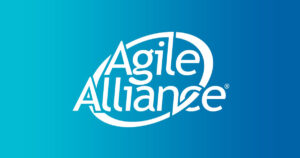Large companies tend to have strictly-enforced and heavy processes, which make them slow moving and generally a place where it is hard to innovate.
IBM has long been an engineer-led organization, where UX to engineer ratios are still be very low in some teams, and where UX best practices don’t always see the light of day.
But IBM has just started to undergo the largest cultural shift in software history (400,000 people large!), it’s the beginning of a new era at IBM, the era of Design Thinking, and it’s led by the new General Manager of Design, Phil Gilbert (yes, you read it correctly, a GM of Design!) [1] [2].
In this talk, I’d like to share the key components of this amazing transformation that IBM is undergoing, with Lean UX and Design Thinking leading the way.
Design Thinking [3] encompasses the thoughtful design of any kind of user interaction and experience that user has with your system, from the installer (5 clicks instead of 20 would be nice), to the API and, naturally, the user interface.
At IBM, rather than trying to dictate great outcomes via specific processes, the IBM Design Thinking initiative introduces a framework that provides the freedom to act in a very lean and agile way. It proposes a new[4] way of thinking and advocates for clear conceptual models and decisions, including an MVP approach to scoping (Minimal Viable Product) with no more than 3 main business objectives per release, strong involvement of sponsor clients throughout the development cycle, shared product ownership by the Product Manager and the UX or Design lead, iterative approach to releases and regular demos to all stakeholders.
[1] http://redmonk.com/jgovernor/2013/01/07/on-the-importance-of-design-at-ibm-love-and-margins/
[2] http://blogs.forrester.com/clay_richardson/12-12-17-design_thinking_blurs_the_line_between_process_and_experience_design
[3] Wikipedia: As a style of thinking, design thinking is generally considered the ability to combine empathy for the context of a problem, creativity in the generation of insights and solutions, and rationality to analyze and fit solutions to the context.
[4] New to organizations the size of IBM.





